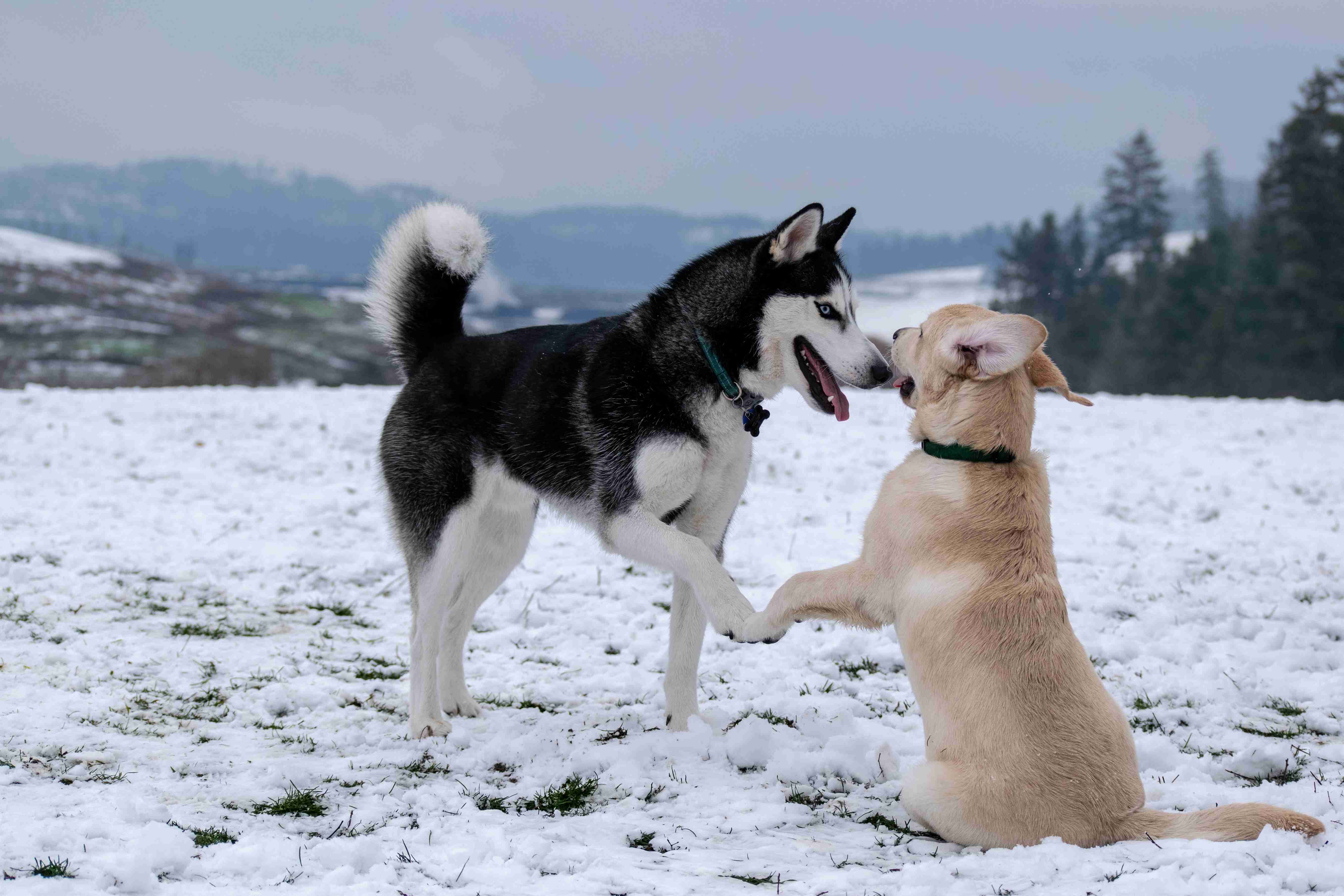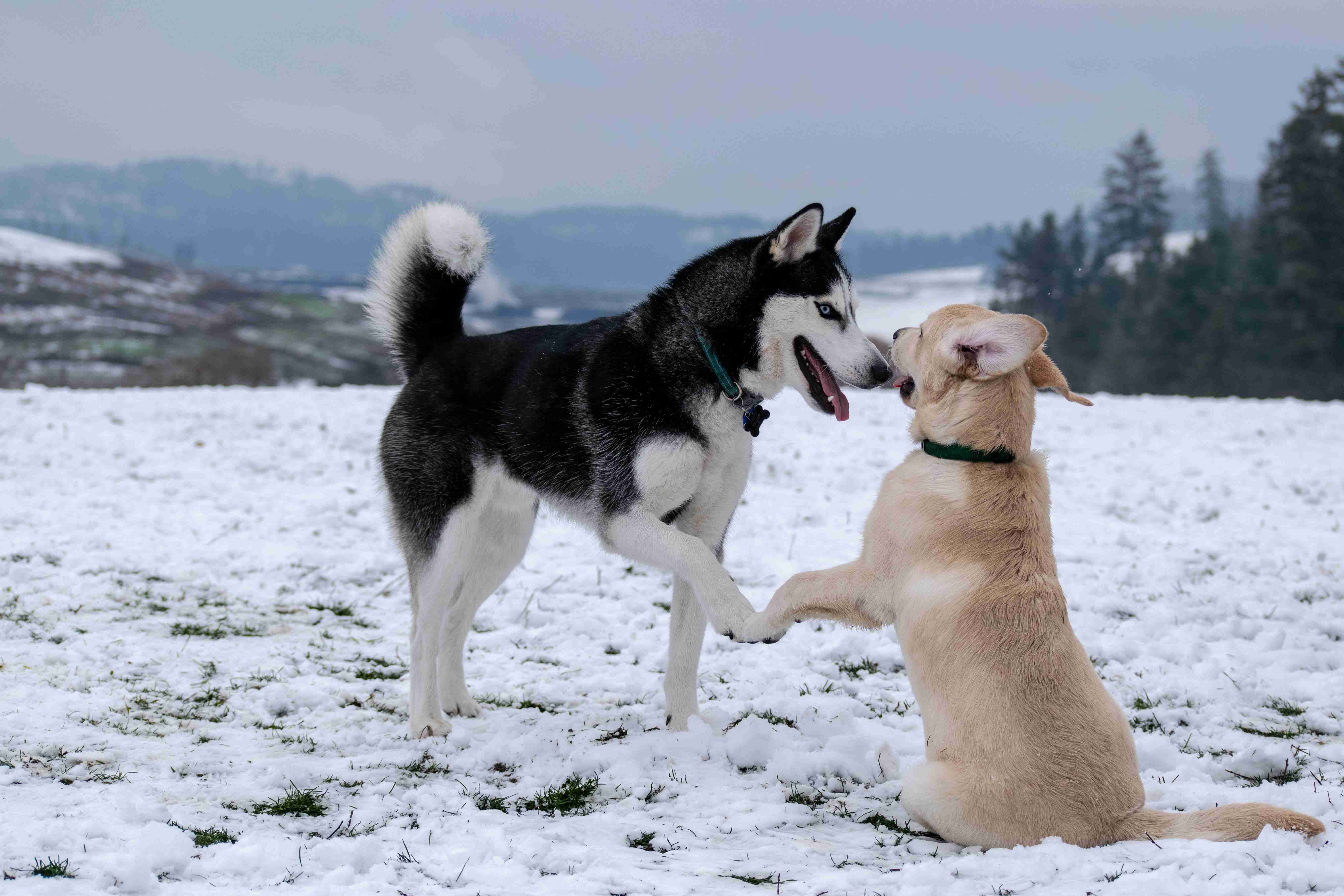Have you ever wondered why dogs wag their tails? It’s a common sight to see a dog happily wagging its tail, but what does it actually mean? Is it just a sign of happiness, or is there more to it? The truth is that tail wagging is a form of communication that dogs use to convey their emotions and intentions. In this blog post, we’ll explore the science behind tail wagging and help you understand what your furry friend is trying to tell you. So, grab a cup of coffee, get comfortable, and let’s dive into the fascinating world of dog tail wagging!
The wagging tail of a dog is one of the most iconic and recognizable gestures in the animal kingdom. It’s a universal sign of happiness and excitement, and it‘s something that all dog owners and lovers look forward to seeing. But why do dogs wag their tails? Is it just a simple gesture of happiness, or is there more to it? In this blog post, we’ll explore the science of tail wagging and try to understand the reasons behind this unique behavior.
The Anatomy of Tail Wagging
Before we dive into the reasons behind tail wagging, it’s important to understand the anatomy of this behavior. A dog’s tail is made up of several small bones called vertebrae, which are connected by muscles and tendons. These muscles and tendons are controlled by the dog’s brain, which sends signals through the spinal cord to move the tail in different directions.
When a dog wags its tail, it’s not just moving the tail from side to side. The angle, speed, and direction of the wag can all convey different emotions and messages. For example, a slow and gentle wag might indicate that the dog is relaxed and content, while a fast and vigorous wag might indicate excitement or even aggression.
Why Do Dogs Wag Their Tails?
Now that we understand the anatomy of tail wagging, let’s explore some of the reasons why dogs wag their tails.
1. Happiness and Excitement
The most common reason why dogs wag their tails is happiness and excitement. When a dog is happy, its brain sends signals to its tail muscles to start wagging. This can happen when the dog sees its owner, meets a new dog or person, or just experiences something that makes it happy.

2. Communication
Tail wagging is also a form of communication for dogs. Dogs use their tails to convey different emotions and messages to other dogs and humans. For example, a dog might wag its tail slowly and tentatively to signal that it’s unsure or nervous, or it might wag its tail quickly and vigorously to signal excitement or playfulness.
3. Social Hierarchy
Tail wagging can also be a way for dogs to establish social hierarchy. When two dogs meet, they might wag their tails at different speeds and angles to communicate their status. A dominant dog might wag its tail slowly and deliberately, while a submissive dog might wag its tail quickly and nervously.
4. Warning Sign
In some cases, tail wagging can be a warning sign. When a dog is feeling aggressive or threatened, it might wag its tail in a stiff and rapid motion, which can be a signal to back off.
Conclusion
Overall, tail wagging is a complex behavior that can convey a wide range of emotions and messages. While it’s mostly associated with happiness and excitement, it can also be a form of communication, a way to establish social hierarchy, and even a warning sign. By understanding the science of tail wagging, we can better understand our furry friends and communicate with them more effectively.
In conclusion, tail wagging is an essential form of communication for dogs. It conveys a range of emotions, including happiness, excitement, fear, and nervousness. Understanding the nuances of tail wagging is crucial for dog owners and lovers as it helps them interpret their furry friends’ emotions and respond appropriately. So, the next time you see a dog wagging its tail, pay attention to the direction, speed, and height of the wag. You’ll be surprised how much you can learn about their feelings.



.jpg)
.jpg)
.jpg)
.jpg)
%20-%20Copy.png)
.jpg)